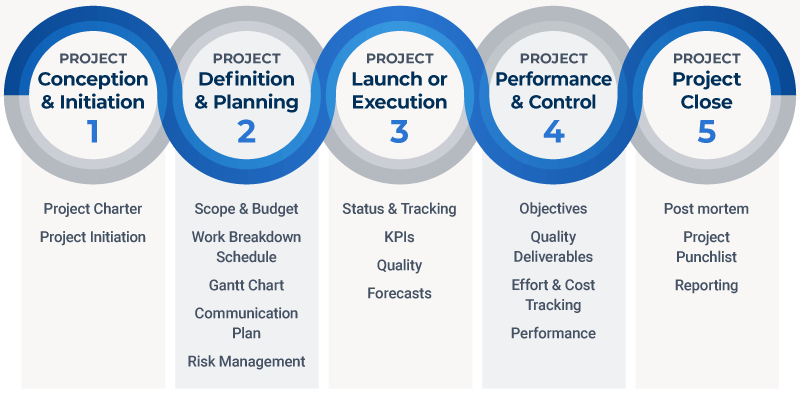The Project Management Phases

Projects can be very confusing. There are so many different phases and steps; it's hard to know where you should start or what order they come in! Luckily for all of us who have been there before, the author has created a breakdown on how best to approach your projects using this five-phase model:
- Planning Phase - This is when you research all possible solutions for your project goals (both technically feasible and financially viable).
- Conceptualization Phase- In this phase, we create an outline that includes initial design ideas, which will become more detailed as time goes by.
- Implementation Planning - Here, we get down into detail with our plan; breaking out tasks according to timelines while considering any potential risks
Phase One Of The Initiation:
The initiation phase is the start of any trainee project manager jobs, so it's no surprise that this part takes a good deal of time. During this stage, we have to take on all aspects from examining and developing concepts and assessing feasibility regarding the decision-making process who will carry out these tasks while also making sure there are enough people in support.
Phase Of Definition:
The definition phase of a project comes after its initiation, during which the requirements for success are outlined. All parties involved in the outcome make their desires clear: what they want and expect from it.
Phase Of Design:
During the design phase, one or more concepts are created that appear to be capable of achieving your project's goal. Designers may create sketches, flow charts, and site trees to conceptualize their ideas while using dioramas for a live demonstration at certain points during this process. HTML screen designs and prototypes can also serve as deliverables given different types of projects.
Phase Of Development:
The development phase is the initial stage of the project. During this time, all materials and tools required to fulfill your vision are procured and set in order; suppliers or subcontractors are contacted for help with anything you may need along the way. When preparation work has been completed enough so that implementation can commence, then it's off to do what needs doing!
Phase Of Implementation:
During the implementation phase, things are coming together. The result of all our hard work is being created right before our eyes, and we can see it come to life with every passing day. Contractors are building what was so long ago just a sketch on paper; programmers code away at their keyboards until everything comes into focus as if by magic; designers put finishing touches onto templates that show off the product in its true glory like never seen before- this is when projects take shape! It's during the implementation phase where you'll find us working around the clock to make sure nothing slips through any cracks or falls behind schedule because no one knows better than those who have been there how important momentum is for such an endeavor - without it, your project will
Phase Of Follow-up:
After the project has been completed, it's important to put time and effort into a phase that often gets overlooked: follow-up. During this stage of post-project work, there are many tasks, including writing handbooks for users; providing instruction and training on how to use your product or service; setting up a help desk so they can get assistance from you if needed in future endeavors with what you've provided them previously (you never want someone coming back after months of not speaking just because something is wrong); maintaining previous results achieved by making sure everything runs smoothly now that the initial excitement may have died down--remembering things like updates! Evaluating whether you met all goals as well as evaluating yourself should also be done during this period.
Read More : Is Salesforce Admin A Good Career Option?
